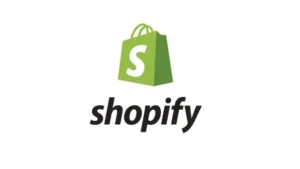I am using a free Venture theme on Shopify and i am trying to make a custom collection page.
I found a solution in stackoverflow but it was able to help someplace.
How to add collection.liquid to an existing page?
The summery of the solution is:
Copy everything that’s in collection.liquid and paste it into a new snippet (let’s say you call it collection-copy.liquid).
Then, in the page you want to add the collections page to, just add {% include ‘collection-copy’ %}
This solution worked well but there is one more issue for me. In the custom created page it says “Sorry, there are no products in this collection” In the customization of the same page there is a “collection” section. But in the “collection” section there is no option to choose a collection. There is only “Enable tag filtering” and “Enable sorting” check boxes.
Webpage: https://mottomfreedom.com/pages/less-is-more
Do you have any idea of assigning a collection with this custom created snippet?
{% paginate collections[settings.frontpage_collection].products by 20 %}
<div class="page-width">
<header class="grid medium-up--grid--table section-header small--text-center">
<div class="grid__item medium-up--one-half section-header__item">
<h1 class="section-header__title">
{{ collection.title }}
{% if current_tags %}
– {% assign title_tags = current_tags | join: ', ' %}
{{ title_tags }}
{% endif %}
</h1>
{% if collection.description != blank %}
<div class="section-header__subtext rte">
{{ collection.description }}
</div>
{% endif %}
</div>
<div class="grid__item medium-up--one-half medium-up--text-right section-header__item">
{% section 'collection-filters' %}
</div>
</header>
<div class="grid grid--no-gutters grid--uniform">
{% for product in collection.products %}
<div class="grid__item small--one- medium-up--one-third">
{% include 'product-card', product: product %}
</div>
{% else %}
{% comment %}
Add default products to help with onboarding for collections/all only.
The onboarding styles and products are only loaded if the
store has no products.
{% endcomment %}
{% if shop.products_count == 0 %}
<div class="grid__item">
<div class="grid grid--no-gutters grid--uniform">
{% assign collection_index = 1 %}
{% for i in (1..10) %}
{% case i %}
{% when 7 %}
{% assign collection_index = 1 %}
{% when 8 %}
{% assign collection_index = 2 %}
{% when 9 %}
{% assign collection_index = 3 %}
{% when 10 %}
{% assign collection_index = 4 %}
{% endcase %}
<div class="grid__item small--one-half medium-up--one-fifth">
<a href="/admin/products" class="product-card">
<div class="product-card__image-container">
<div class="product-card__image-wrapper">
<div class="product-card__image">
{% capture current %}{% cycle 1, 2, 3, 4, 5, 6 %}{% endcapture %}
{{ 'product-' | append: current | placeholder_svg_tag: 'placeholder-svg' }}
</div>
</div>
</div>
<div class="product-card__info">
<div class="product-card__name">{{ 'homepage.onboarding.product_title' | t }}</div>
<div class="product-card__price">
$19.99
</div>
</div>
<div class="product-card__overlay">
{% assign view_string_length = 'products.product.view' | t | size %}
<span class="btn product-card__overlay-btn {% if view_string_length > 8 %} btn--narrow{% endif %}">{{ 'products.product.view' | t }}</span>
</div>
</a>
</div>
{% assign collection_index = collection_index | plus: 1 %}
{% endfor %}
</div>
</div>
{% else %}
{% comment %}
If collection exists but is empty, display message
{% endcomment %}
<div class="grid__item small--text-center">
<p>{{ 'collections.general.no_matches' | t }}</p>
</div>
{% endif %}
{% endfor %}
</div>
{% if paginate.pages > 1 %}
<div class="pagination">
{{ paginate | default_pagination | replace: '« Previous', '←' | replace: 'Next »', '→' }}
</div>
{% endif %}
</div>
{% endpaginate %}
 Question posted in
Question posted in 

2
Answers
You are right about giving some time before accepting an answer :)) The solution worked but forced me to create 1 page and 4 liquid files per collection. And at the end, i figured out that some sections like "collection.list" doesn't directs to the page which i have created. I think you were talking about this at the beginning of the answer :)
After that, i found a much better solution. Just creating a new section.liquid file and placing it in "collection.liquid" with an "if" statement solved my problem.
But in any way, i'm grateful for your interest. Thank you very much Dave.
It looks like there’s nothing defining the
collectionvariable anywhere.I would suggest changing the beginning of your code snippet from:
To:
There is an implicit
collectionsvariable whenever you’re on a page that includes/collections/[something]in the URL, but when you’re on a URL that’s/page/[something], you have an implicitpagevariable in Liquid instead.Note: if the collection set in your theme’s value for
settings.frontpage_collectionisn’t the one you want, you can possibly:a. Change the value using the ‘Customize’ link beside your theme (most easily found on the /admin/themes page), useful if you’re not going to use that setting for anything else;
b. Hard-code a collection handle, eg:
collections['i-am-sure-this-will-never-change'], but hard-coded strings are ugly and should generally be avoided;c. Create your own theme setting by adding an entry to
config/settings_schema.json– see https://help.shopify.com/en/themes/development/theme-editor/settings-schema if you’re still getting up to speed with custom theme settings; ord. If all your content is in a section, you can use section settings (similar to theme settings) to make a variable that’s tied specifically to just that block of code.
If you need to make these special pages for multiple collections, and each of these pages is largely reusing the same code, you can make your life easier by moving the common code to a snippet and passing variables to it from your page template. To do so:
collection-in-page.liquid. We will be passing a collection into this snippet, so you can remove theassignstatement.In your page-specific template, figure out what the collection handle is going to be
a. This might be hard-coded, or it might be something you could look up by using metafields or tags on the page. Examples:
{% assign collection_handle = 'hardcoded-handle' %},{% assign collection_handle = page.metafields.related_items.collection %}In your page template, include the snippet you created. I find it helps to explicitly pass any variables I want to use, like so:
{% include 'collection-in-page', collection: collections[collection_handle] %}Hope this helps!